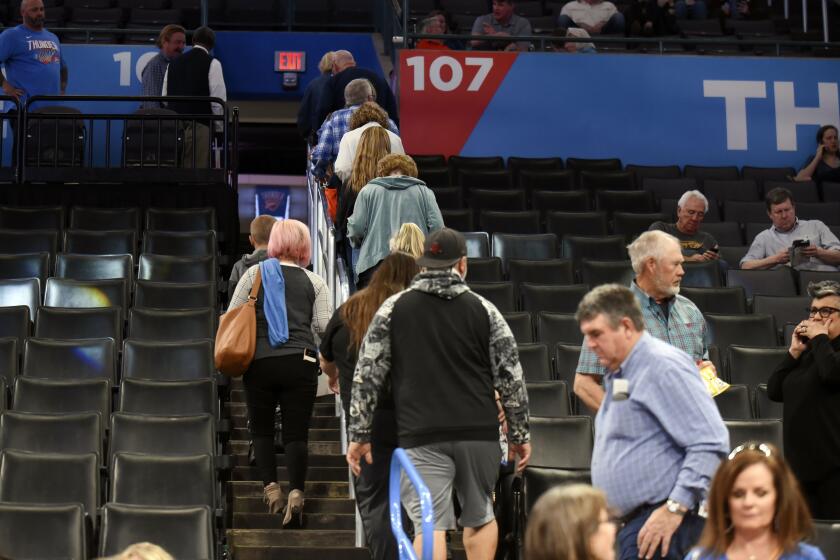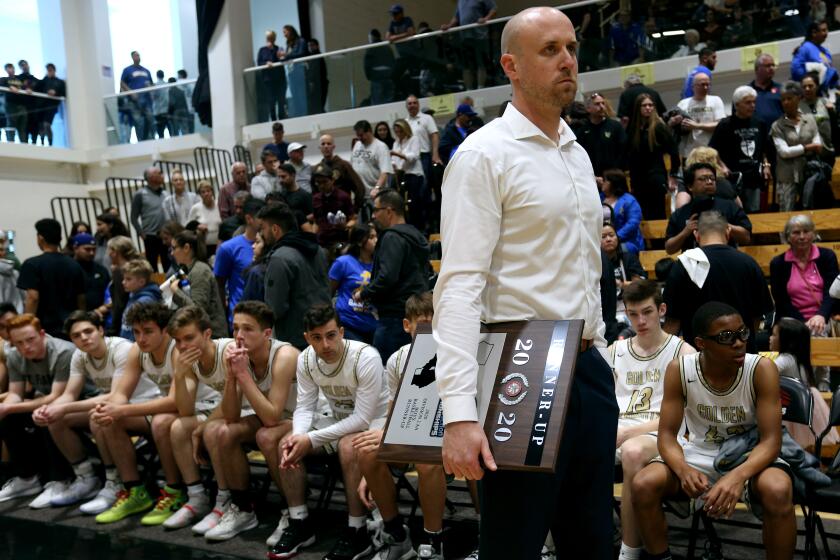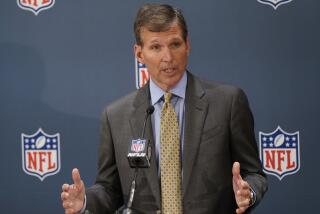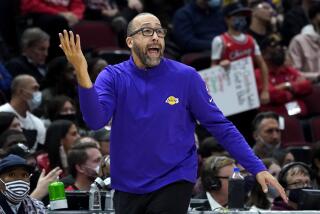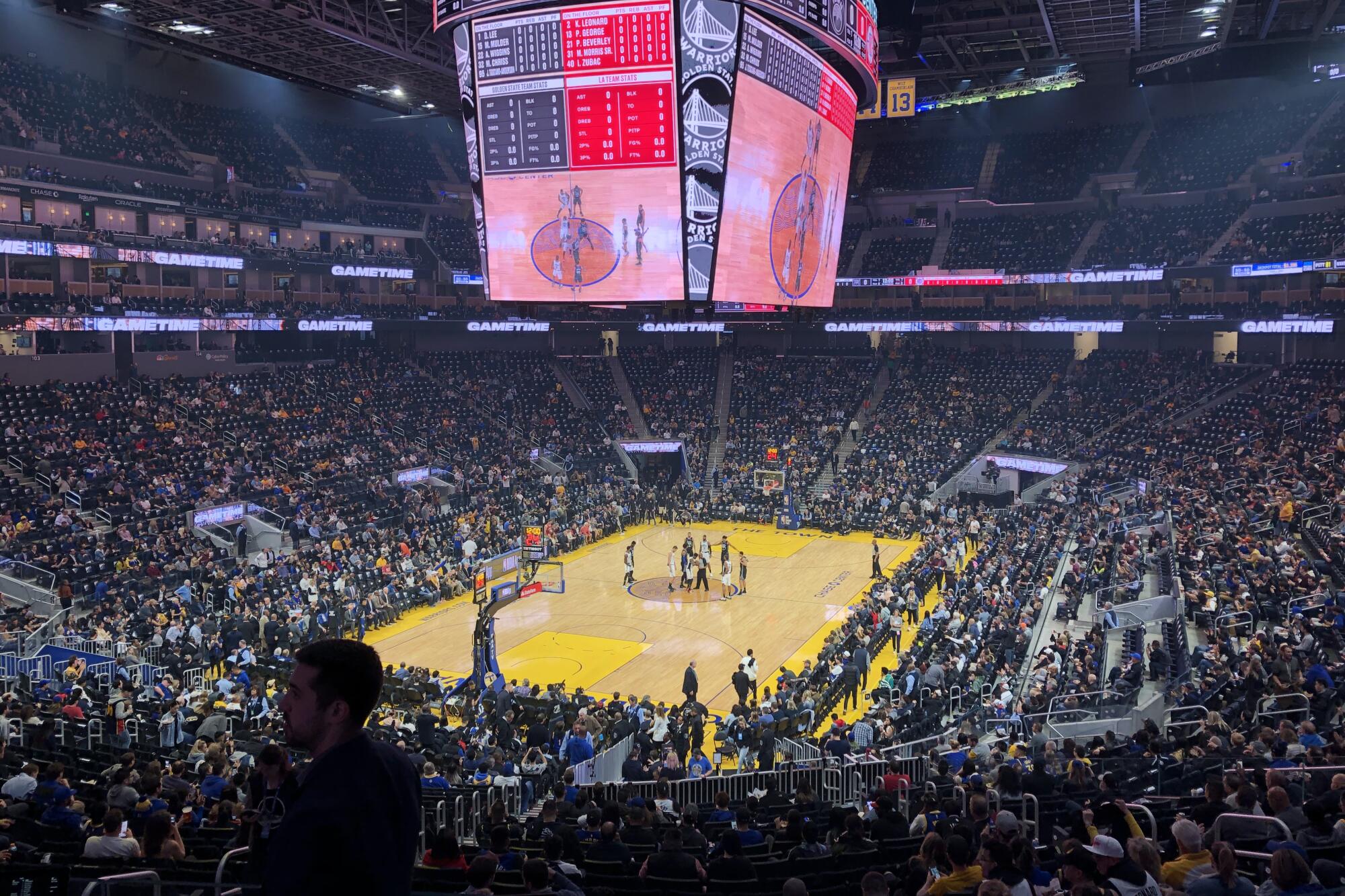
In four decades working within the NBA, Rick Welts never had a day quite like March 11, 2020.
March 12 was shaping up to be just as odd too.
Less than 18 hours after the league suspended last season once Utah’s Rudy Gobert became the first player to test positive for coronavirus, the Golden State Warriors’ president and chief operating officer convened an all-staff meeting. Inside an exclusive club lounge where the well-heeled typically mingled before watching games inside Chase Center, the team’s months-old, $1.4-billion home along San Francisco’s waterfront, Welts told team employees to go home and work from there until further notice.
They left with more questions than answers.
“I’ve been going to an NBA office for 43 seasons, that’s where I’m comfortable,” Welts said. “I could probably count on two hands the number of video conference meetings that I’d had in my life up until that point.”
Operating at long distance is no longer the specialty of Warriors sharpshooter Stephen Curry alone. With a printed-out, hour-by-hour schedule as his daily guide, Welts now skips virtually through meetings without leaving his office chair. In the past year Warriors employees have spent more than 29,000 hours taking part in 42,000 remote meetings via videoconferences.
The postponement of a March 11 game between the Utah Jazz and Oklahoma City Thunder because of a positive coronavirus test changed the sports world.
“And I think I’ve been on every one,” Welts said.
More than victories or net ratings, it is the kind of statistic that best describes the shift that’s occurred during the NBA’s pandemic times — 12 months that feel as though they’ve lasted 100 years, Welts said.
As the league reaches the one-year anniversary of the shutdown that lasted 134 days between competitions, March 11 has become a bright line separating the way the NBA used to operate and the version altered by the pandemic. Though 30 teams, the players and the league office have gotten back to work — first inside a 22-team “bubble” at Disney World last summer to complete the season, followed by a shortened season beginning in December that has played 95% of its scheduled games despite cross-country travel — it’s not the same as getting back to what once was, nor any guarantee it ever will.
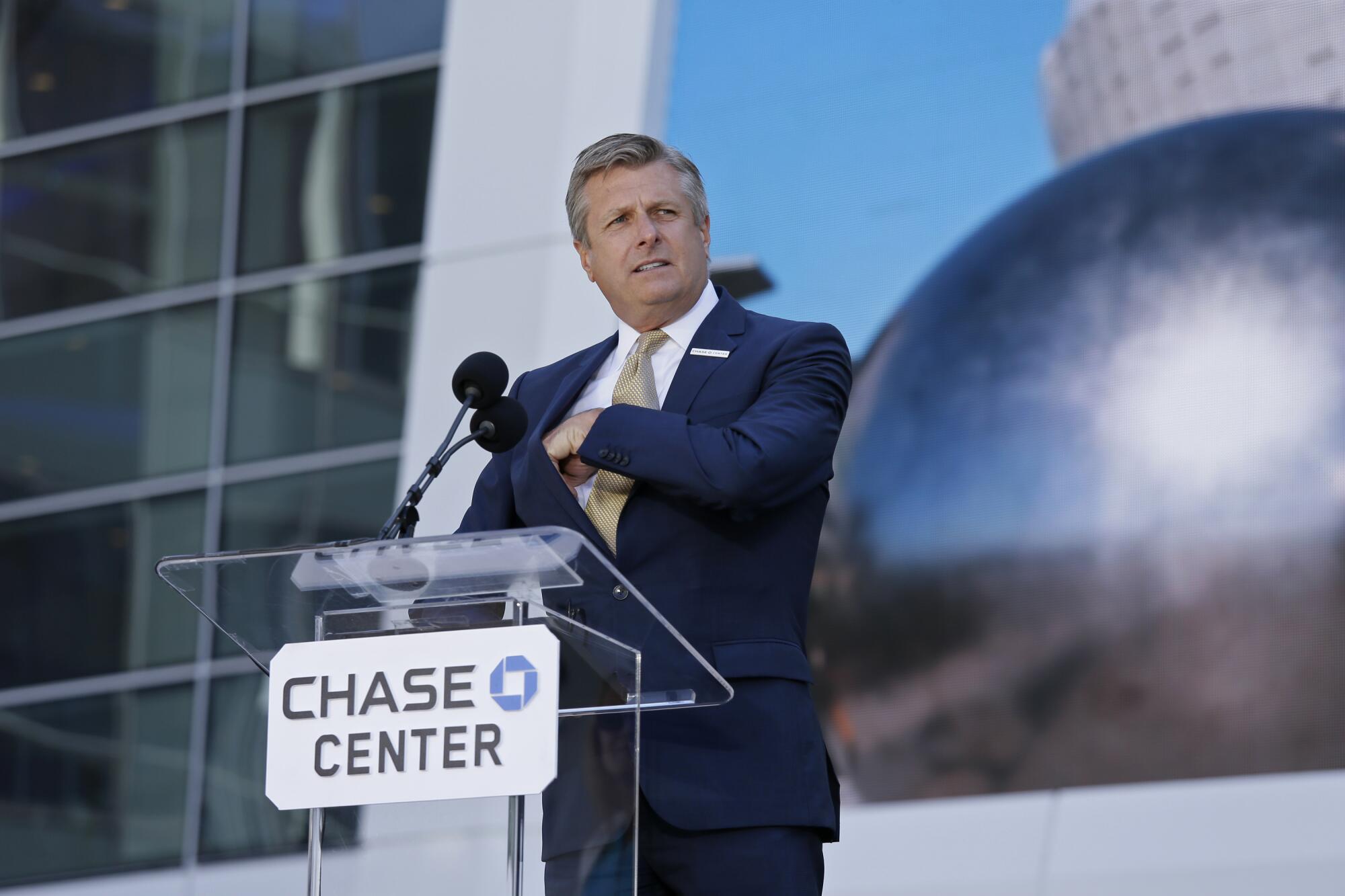
“I thought it was just going to be a little pause into the season, maybe like a week or two and we were going to come back, but as it started to get bigger and bigger and it was happening all across the world … it was like a realization that, man, this is going to take a while,” Clippers star Paul George said. “This is a real possibility that life won’t be back to normal as it once was. This is going to be the new norm. Realistically, that’s how I’ve been thinking and that’s how I think, still even to this day.”
In some ways, changes introduced or accelerated in the last year have not been a bad thing. Welts still believes that no substitute can replace the collaboration of working in an office environment, but he’s no longer a skeptic about the value of working from home.
“It’s just worked so much better than I ever expected it could,” he said. “Certainly our senior team is a much more close-knit group today than we were then because we have spent, it feels like, every waking hour of our lives together the last year.”
The World Health Organization announced the coronavirus outbreak had become a pandemic on March 11, 2020. Since then, the virus has seemingly touched all aspects of life in Southern California and beyond. The Times looks back on a full year of life in a pandemic.
Welts didn’t predict what was coming when he arrived at the office of San Francisco Mayor London Breed on the morning of March 11 to make the case that the team could safely host fans the following day for a home game against Brooklyn just as it had hosted a more than half-full arena March 10 against the Clippers.
But when there was no budging on a new order from the city’s health office prohibiting gatherings of more than 1,000 people amid a burgeoning pandemic, Welts’ next stop was the arena’s practice facility to inform Warriors players about plans for a fan-less game. Curry was the only player to speak up, asking whether players could choose the in-game music playlist.
The afternoon became a frenzied blur. Some staffers focused on the logistics of hosting the Nets. By late afternoon, the team’s media relations staff slipped bars of Ghirardelli chocolate into media members’ credential packets, per usual, handing them off to a courier for deliveries at hotels across the city. Others handled the logistics of postponing or canceling upcoming concerts and a G League game.
When Welts sat on the couch in his San Francisco condo that evening, all he wanted was to relax and watch basketball. Then he saw the tipoff of Utah’s road game against Oklahoma City suspiciously delayed.
High school sports have resumed after the COVID-19 shutdown. Here is how it touched aspects of athletes’ lives, from school to training to recruiting.
Orlando’s Nikola Vucevic was putting his young son to bed when he heard about Gobert’s positive test in Oklahoma City, and the season suspension it triggered that night. Milwaukee’s Giannis Antetokounmpo, the league’s reigning most valuable player, had cautioned his girlfriend only days earlier that he needed to buy more groceries than usual in anticipation of staying home. His concern was magnified because the couple had just welcomed a baby.
“Let me tell you, I was like, ‘I told you, you wasn’t listening to me, I told you, this is serious!’” Antetokounmpo recounted Sunday before the All-Star game.
On Chase Center’s second level, the Warriors public relations’ staff stopped working ahead on game notes for upcoming matchups when the NBA announced the season’s suspension at 6:30 p.m.
“There was almost this moment like, well, at least we’re not working until 2 a.m. now,” said Cole Lawrence, a team public relations assistant. “But now I have no certainty what the next couple months of my life’s going to look like.” Neither did then-Clippers assistant Tyronn Lue. Once he heard there would be no quick resumption, Lue left his Los Angeles apartment and moved into the Denver home of then-team broadcaster Chauncey Billups, where they worked out and watched film for months.
If the memories remain vivid one year later, projecting what the league will look like going forward remains a murky exercise. The league’s increased focus on cleaning isn’t going anywhere. Other pandemic habits could last longer than others.
Travel is one such unknown. Though the NBA expects to resume playing international games in Europe and Asia, that won’t happen until 2022-23 at the earliest, Commissioner Adam Silver said last week. Because of ongoing border restrictions in Canada, the Toronto Raptors temporarily relocated to Tampa, Fla., this season.
Welts used to travel to New York about 10 times a year for league business, thinking nothing of two days of travel for a two-hour meeting. He “can’t even imagine” spending his time that way again. Local and national broadcasts of the same game that were once produced out of multiple television production trucks, using dozens of network employees, now use a fraction of the workforce. When teams hit the road, it’s become standard for television and radio play-by-play announcers and their analysts to call games remotely and for players to stay largely confined to their hotels. Both have adapted but wonder when they’ll be allowed to be on the move again.
“It’s true that if you told me that we were going to have to wear masks and all that and not be able to almost travel from one country to another and have no fans and all that, I mean, it’s weird to understand,” Gobert said. “The good thing I believe that you can see that people are there for one another.”
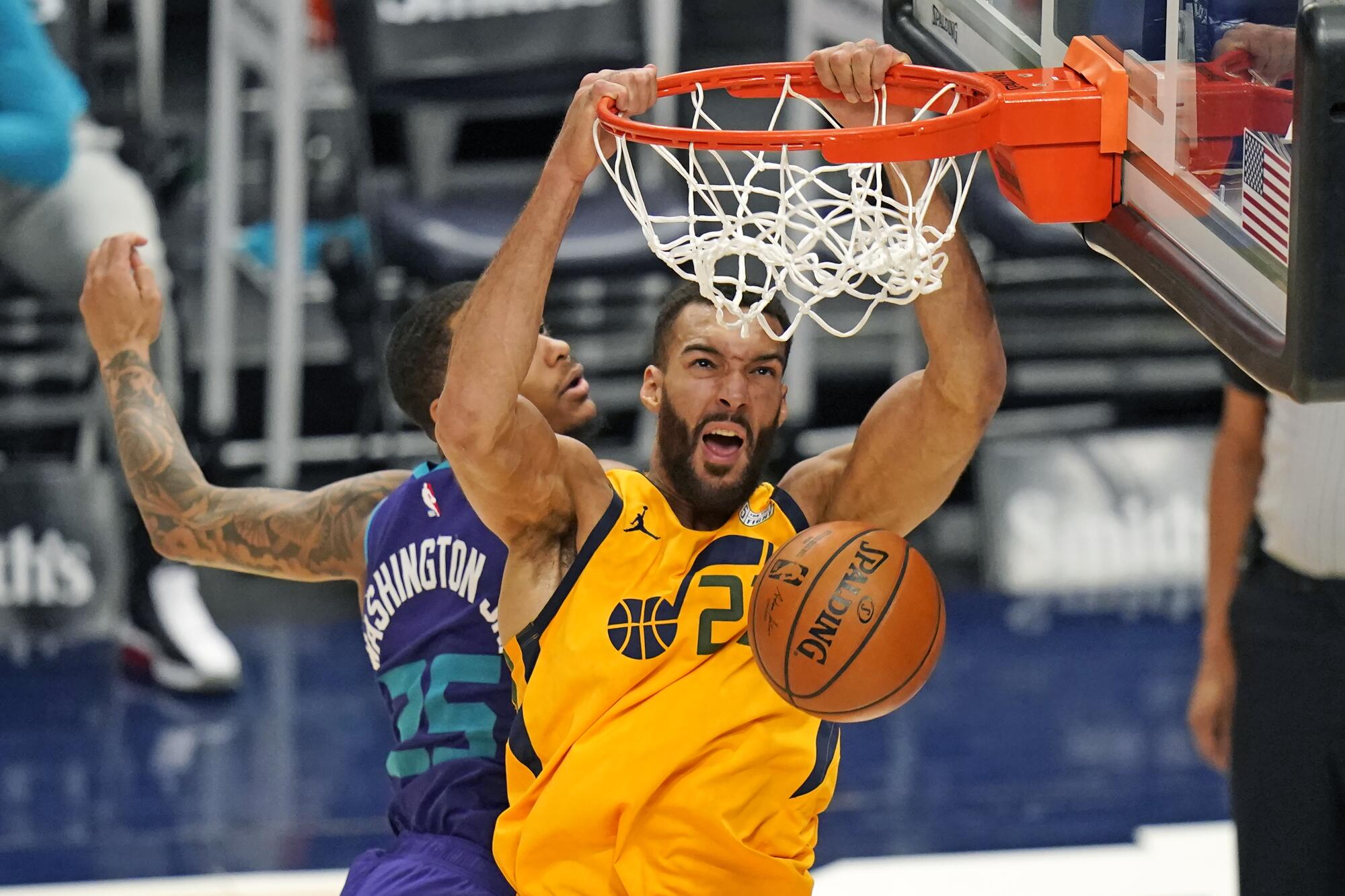
Domestically, the league doesn’t have concrete plans for summer leagues. Since last summer’s bubble, when a limited number of reporters living inside the Disney World campus had in-person access to players and coaches, all media access has taken place remotely.
“How will media access change? Because I’m not sure the players think it’s such a terrible idea the way we have it now as opposed to the way it was before,” Welts said, referring to reporters mingling with player at practices as well as in the locker room before and after games. “I think we’re going to have to work our way through that and how much direct access, face-to-face access, that media people have with our teams, whether that’s practice or postgame news conferences. There’s good and bad in that, I think.”
“Since the beginning of the pandemic and through to the present day, the NBA from its highest levels has promised the Professional Basketball Writers Association that media access will return to normal when the pandemic ends,” said Josh Robbins, president of the PBWA. “These promises from league officials have been explicit and leave no room for interpretation. The normal media access policy benefits everyone: the league, its teams, its players and, most of all, the fans whose passion fuels the league’s business model.”
That business model has been tested, with the league reportedly falling $1.5 billion short of last season’s revenue projections. Though Silver last week described the league’s financial health as solid, he noted it had absorbed “considerable losses.”
Increasing revenue, which is shared by players, hinges on returning fans to arenas. When Philadelphia welcomes fans at home games for the first time this month, more than half of the league’s teams will have hosted a limited number of spectators. Silver said he was “fairly optimistic” that local health authorities will allow more arenas to follow suit as the playoffs approach in late May, particuarly as vaccination rates increase. The league is not currently considering staging the postseason at a single-site bubble again and Silver is “hopeful that we’ll have relatively full arenas next season, as well.”
Fans in arenas typically generate 40% of league revenue, Silver has said, but for the Warriors that share is closer to 70%. In January, less than two months after a plan to admit 9,000 fans to Warriors home games was rejected by San Francisco officials, the team became one of the last to trim its full-time workforce by laying off 9% of its business-side employees, mostly in ticket sales and game presentation.
“Financially, I’m proud we have the best model in the NBA when things are normal, but the reality is we built and opened last year a privately financed $1.4-billion arena and we have the highest payroll in the history of the NBA this year,” Welts said. “When times are good we’re, I think, a model for the NBA in terms of revenue generation. When times aren’t it hits us harder just because of the cost side of our business.”
California’s four NBA teams have yet to host fans. In San Francisco, that means it has been one year since spectators last showed up more than an hour before tipoff to watch Curry’s dazzling shooting routine. In hopes of getting a clearer picture of when fans might one day return, Welts last week logged into a sit-down with city and county officials.
It was virtual meeting No. 42,001 and counting.
More to Read
Go beyond the scoreboard
Get the latest on L.A.'s teams in the daily Sports Report newsletter.
You may occasionally receive promotional content from the Los Angeles Times.

